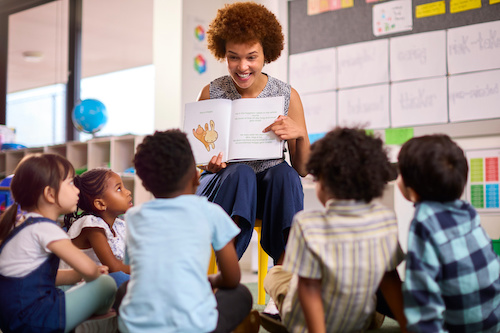Key points:
- Immersive opportunities make high frequency words stick and keep students engaged
- Mastering high frequency words helps students grow into proficient readers
- See related article: How efficacy studies improve literacy instruction
- For more news on literacy, visit eSN's Innovative Teaching page
If you were to poll an audience of educators--classroom teachers, literacy specialists, reading researchers, and university professors--about whether high frequency words should be taught in early elementary, the resounding answer would be YES. These words, after all, are important to students’ ultimate reading success.
More News from eSchool News
Strategies to help girls stay engaged in STEM learning
Ensuring that girls feel supported and empowered in STEM from an early age can lead to more balanced workplaces, economic growth, and groundbreaking discoveries.
5 vocabulary strategies powered by technology
In my work with middle school students, I’ve seen how critical that period of development is to students’ future success. One area of focus in a middle schooler’s development is vocabulary acquisition.
The power of goal setting: A skill for lifelong success
For students, the mid-year stretch is a chance to assess their learning, refine their decision-making skills, and build momentum for the opportunities ahead.
The importance of teacher-student relationships
Middle school marks the transition from late childhood to early adolescence. Developmental psychologist Erik Erikson describes the transition as a shift from the Industry vs. Inferiority stage into the Identity vs. Role Confusion stage.
Virtual art meets language learning: A tech-enhanced ESL experience
Art has a unique power in the ESL classroom–a magic that bridges cultures, ignites imagination, and breathes life into language. For English Language Learners (ELLs), it’s more than an expressive outlet.
Leadership is key to protecting student data privacy in 2025
In the year 2025, no one should have to be convinced that protecting data privacy matters. For education institutions, it’s really that simple of a priority–and that complicated.
Ethical PD: Doing right by the teachers who do right by the world
Teachers are superheroes. Every day, they rise to the challenge, pouring their hearts into shaping the future. They stay late to grade papers and show up early to tutor struggling students.
Leading (again) in uncertainty
We are again in uncertain times. We again find ourselves dealing with sudden changes and uncertainty. We seem to be in a state of constant change and ambiguity.
Rethinking student assessment: Tools and strategies for meaningful evaluation
In today’s evolving educational landscape, effective student assessment goes beyond multiple-choice tests and letter grades. According to a recent study, over 60 percent of educators believe traditional assessments fail to fully measure student understanding.
Offering books featuring favorite licensed characters can engage young readers
Holden, my 21-month-old, has fallen in love. His early morning snack and “couch time” includes a dose of “Tiger!” This is toddler for, “Mom, turn on Daniel Tiger’s Neighborhood.”











